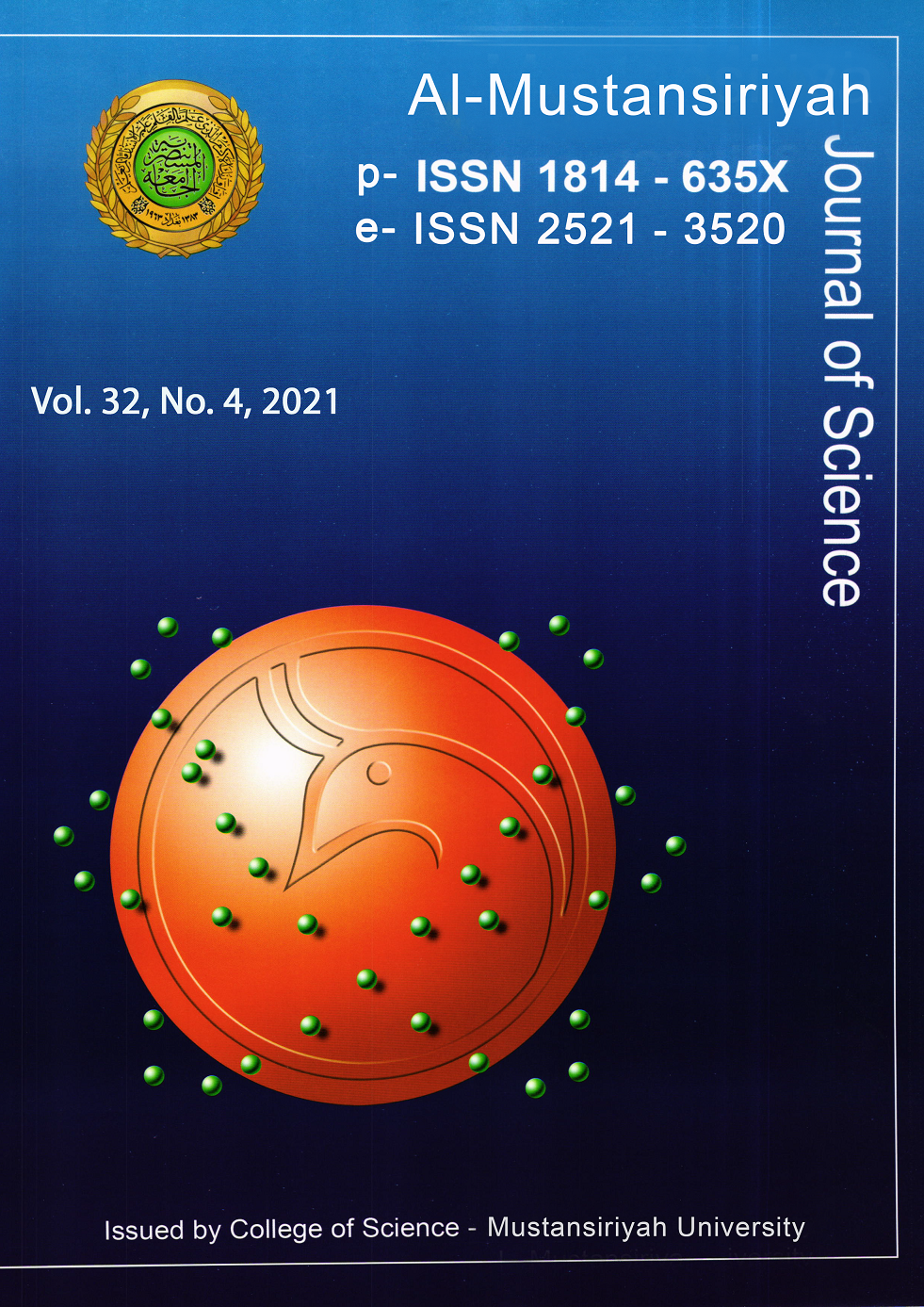Simulation and Parameterization of Longitudinal Development using Different Hadronic Interaction Models
DOI:
https://doi.org/10.23851/mjs.v32i4.1035Keywords:
Cosmic rays, extensive air showers, longitudinal development, AIRES program.Abstract
The importance of investigating ultra-high energy cosmic ray particles interactions was investigated in this work. Different hadronic interaction models such as (SIBYLL, EPOS, and QGSJET) were used air showers simulation AIRES program (version 19.04.00). Also, the shower size of Extensive Air Showers (EAS) was calculated by estimating the longitudinal development. Moreover, the longitudinal development simulation of the two primary particles (iron nuclei and proton) was performed, taking into account their primary energies effect as well the zenith angle for charged particles that produced in the EAS, with energies (1017 and 1019) eV. At such extremely high energies (1017 and 1019) eV, new parameters as a function of the primary energy were obtained by fitting the longitudinal development curves of EAS using the Lorentz function. Comparison of the results showed a good agreement between the values obtained from the parameterized longitudinal development using Lorentz function with experimental results by Pierre Auger EAS observatory as well the simulated results by Sciutto for the primaries iron nuclei as well proton, with the electrons and the charged muons secondary particles of high energies.
Downloads
References
A. N. Cillisa and S. J. Sciuttob, Extended Air Showers and Muon Interactions (2001).
Aab A, et al., Muons in air showers at the Pierre Auger Observatory: Mean number in highly inclined events, arXiv:1408.1421v6 [astro-ph.HE] 2 Dec (2015).
Aab A, et al., Measurement of the average shape of longitudinal profiles of cosmic-ray air showers at the Pierre Auger Observatory, arXiv:1811.04660v2 [astro-ph.HE] 16 May (2019).
Kadhom F Fadhel, et al., Estimating the Lateral Distribution of High Energy Cosmic Ray Particles by Depending on Nishimura-Kamata-Greisen Function, Journal of Physics: Conference Series, 10.1088/1742-6596/1879/3/032089 (2020).
S. Knurenko, et al., Recent results from Yakutsk experiment: development of EAS, energy spectrum and primary particle mass composition in the energy region of 10^15-10^19 eV (2006).
M. Roth, The lateral distribution function of shower signals in the surface detector of the pierre auger observatory, The 28th International Cosmic Ray Conference (2003). arXiv:astro-ph/0308392.
Mangu VS. Rao and B.V. Sreekantan, Extensive air showers, World Scientific (1998).
S. J. Sciutto, The AIRES system for air shower simulations. An update Proceedings of ICRC, arXiv:astro-ph/0106044v (2001).
Al-Rubaiee A. Ahmed, and Ahmed Jumaah, investigating of longitudinal development parameters through air shower simulation by different hadronic models, International Journal of Applied and Natural Sciences (IJANS), Vol. 2, No. 4, PP. 135-140, (2013).
B. Rossi, and K. Greisen, Cosmic-ray theory, Reviews of Modern Physics, 13-240 (1941).
Jaime Alvarez-Mu˜niz, et al., Jeferson A. Ortiz, and Todor Stanev, Hybrid simulations of extensive air showers arXiv:astro-ph/0205302v1 17 May (2002).
T. Antoni a, et al., Electron, muon, and hadron lateral distributions measured in air showers by the KASCADE experiment arXiv:astro-ph/0004233v1 17 Apr (2000).
A. A. Lagutin and R. I. Raikin, Lateral Distribution of Electrons in EAS at Superhigh Energies: Predictions and Experimental Data, Department of Theoretical Physics, Altai State University, 66, Dimitrova str., Barnaul, 656099, Russia, Available online 24 April (2001).
J. Matthews, A Heitler model of extensive air showers, Department of Physics, Southern University, Baton Rouge, LA 70813, USA, (2005).
S. Sciutto, AIRES User's Manual and Reference Guide, Version 19.04.00, April 24, (2019).
R. Engel, et al., "Air Shower Calculations with the New Version of SIBYLL", Proc. 26th ICRC, (Utah), vol. 1, p. 415 (1999).
S. Ostapchenko, Monte Carlo treatment of hadronic interactions in enhanced Pomeron scheme: I. QGSJET-II model, arXiv:1010.1869v2 [hep-ph] 16 Jan (2011).
T. Pierog, et al., EPOS LHC : test of collective hadronization with LHC data, arXiv:1306.0121v2 [hep-ph] 20 Dec (2013).
Angelo Ciaramella, Applications of neural networks in astronomy and astroparticle physics, Devel. Astrophys., 2(2005): ISBN: 81-7736-295-X.
S. Sciutto, Air Shower Simulations with the AIRES System arXiv:astro-ph/9905185 (1999).
Downloads
Key Dates
Received
Accepted
Published
Issue
Section
License
Copyright (c) 2021 Al-Mustansiriyah Journal of Science

This work is licensed under a Creative Commons Attribution 4.0 International License.
(Starting May 5, 2024) Authors retain copyright and grant the journal right of first publication with the work simultaneously licensed under a Creative Commons Attribution (CC-BY) 4.0 License that allows others to share the work with an acknowledgement of the work’s authorship and initial publication in this journal.






















